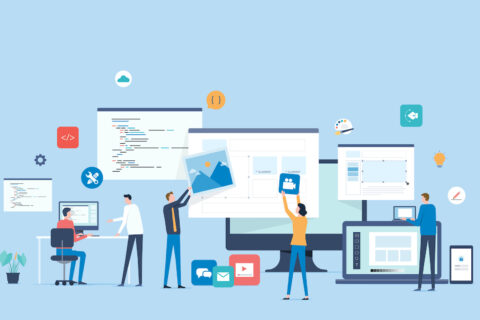In today’s intensely competitive business environment, technological innovation is the most important trend that can impact your business. Subsequently, it’s essential to stay informed about the latest innovations you can leverage to ensure your organization isn’t left behind.
According to Cisco executive John Chambers, 40 percent of businesses will shutter over the next decade if they fail to integrate new technology. Technology is disrupting society in ways that seemed inconceivable a decade ago.
AI, robotics, and the future of work
Artificial intelligence (AI) and robotics are changing the rules of organizational execution and agility. By far, the need for increased scalability and readiness are driving investments in new technology across industries and businesses, large and small.
Today’s small businesses need to do more work with less manpower, and they need to do it at less cost. Furthermore, they need to reduce the time and cost related to moving from proof of concept to marketable products and services. What’s more, business leaders must enable employees to make better decisions and work smarter.
In a world where every industry is impacted by the technological revolution, readiness is a prerequisite. Startups and small businesses alike must leverage technology to stay ahead of the competition and remain profitable.
In recent years, companies like Amazon have replaced the familiar conveyor belt packaging systems with Kiva robots that automate the picking and packing process in warehouses at speeds humans can’t compete with. Just like their human predecessors, the robots handle goods with care and identify what’s inside every package they handle.
With contextual awareness, the robots decide the best way to route parcels through the facility and where to place products to optimize fulfillment. They do this by conforming to process outlines, rules and information that define what’s consider the best course of action – all within microseconds.
In this and other scenarios, work automation and data-informed machine intelligence improve work output. As this occurs, the machines learn. They autonomously adapt predefined rules to current scenarios and adjust to changes as soon as they unfold.
The future has arrived.
Unprecedented levels of collaboration
Around the world, businesses and governments are collaborating to foster innovation in data science and robotics. In fact, these deals are happening more often. And this kind of collaboration could transform businesses.
However, it may prove challenging for business leaders to understand the significance of governmental collaboration and how it impacts technology research. In practice, Canada and Germany have entered into the Memorandum of Understanding (MoU), which pledges cooperation in the fields of machine learning and quantum computing. In tandem, private sector Canadian and German research firms have established the Canada-Germany quantum computing and machine learning network.
Meanwhile, during a visit to the UAE, Chinese President Xi Jinping expressed a desire to collaborate in the fields of artificial intelligence and information technology. In 2018, Didi Chuxing – China’s version of Uber – partnered with Softbank in Japan to launch its ride services in that nation.
What’s the common thread? International politics make many of these private-sector deals possible.
Automation and streamlined operations
Robotic process automation (RPA) has emerged as a scalable and duplicable solution for organizations. RPA has numerous applications and can replace human decision-making, and take on manual tasks, while not possessing the intelligence of AI. Routine business activities can be performed by RPA tools across industries.
Business leaders are leveraging this and other technologies to streamline operations. Before moving to advanced analysis to find opportunities for improvement, however, most companies will grab the low hanging fruit and automate obvious, repetitive human tasks. The immediate benefits of these changes are increased accuracy and lower costs. Only then will business leaders look to advance planning tools such as robotic process automation.
Automation is best accomplished with step-by-step planning and a company-wide strategy for deployment. Then, continually monitor progress as your plan unfolds.
In the coming years, stay informed regarding technological advances. They’re coming a mile a minute. The trend you miss could be the trend that your competitor leverages to out-perform you.
Matt Shealy is the President of ChamberofCommerce.com. Chamber specializes in helping small businesses grow their business on the web while facilitating the connectivity between local businesses and more than 7,000 Chambers of Commerce worldwide.
© YFS Magazine. All Rights Reserved. Copying prohibited. All material is protected by U.S. and international copyright laws. Unauthorized reproduction or distribution of this material is prohibited. Sharing of this material under Attribution-NonCommercial-NoDerivatives 4.0 International terms, listed here, is permitted.













